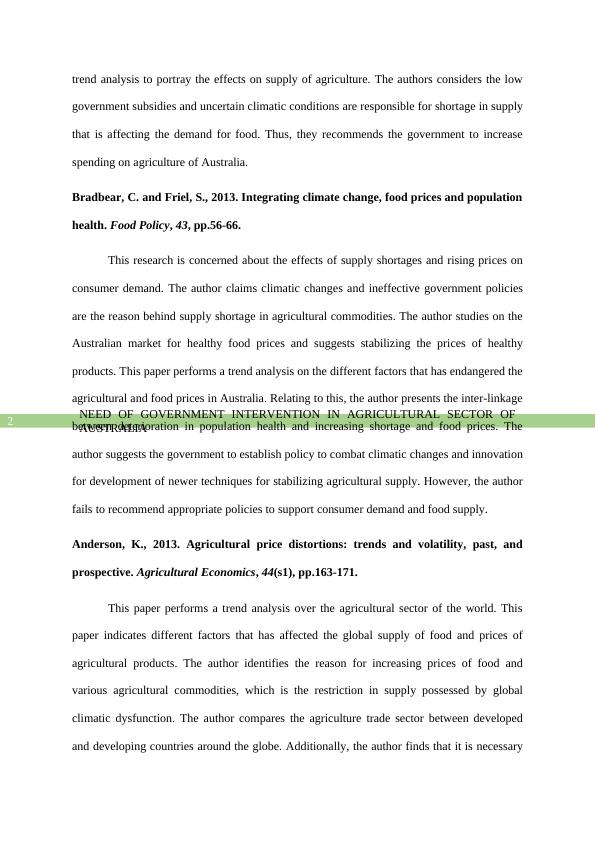Need of Government Intervention in Agricultural Sector of Australia
10 Pages2634 Words498 Views
Added on 2022-10-15
About This Document
This article discusses the need for government intervention in the agricultural sector of Australia due to adverse climatic conditions and supply shortages. It presents various research papers that suggest increasing investment in agriculture, stabilizing prices of healthy products, removing restrictions on the agricultural market, and building transformational adapters to support agricultural supply. The article concludes that the Australian government should continue to intervene to reduce the impact caused in the agricultural sector.
Need of Government Intervention in Agricultural Sector of Australia
Added on 2022-10-15
ShareRelated Documents
End of preview
Want to access all the pages? Upload your documents or become a member.
Assignment On Economics And International Trade
|12
|2947
|35
Economics for Business.
|19
|1275
|12
Impact of Agricultural Production on Australian Economy
|9
|1503
|442
Assessing natural capital risks and dependencies in lending to Australian wheat farms
|24
|9981
|360
Stabilisation Agriculture: Implementing Urban Agriculture and Agroforestry in Forced Displacement Settings
|15
|888
|407
Agricultural Reforms in Australia
|9
|1445
|33



